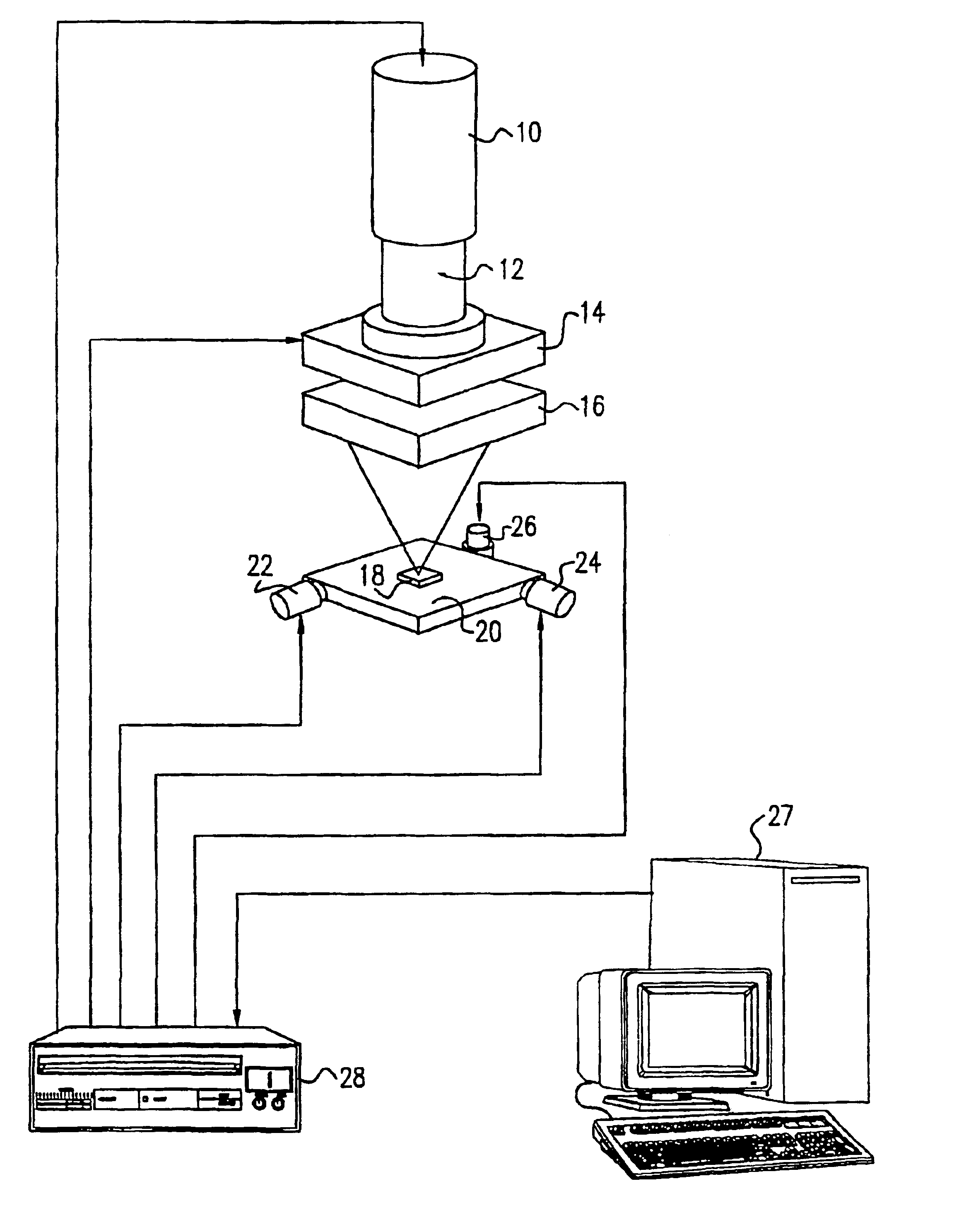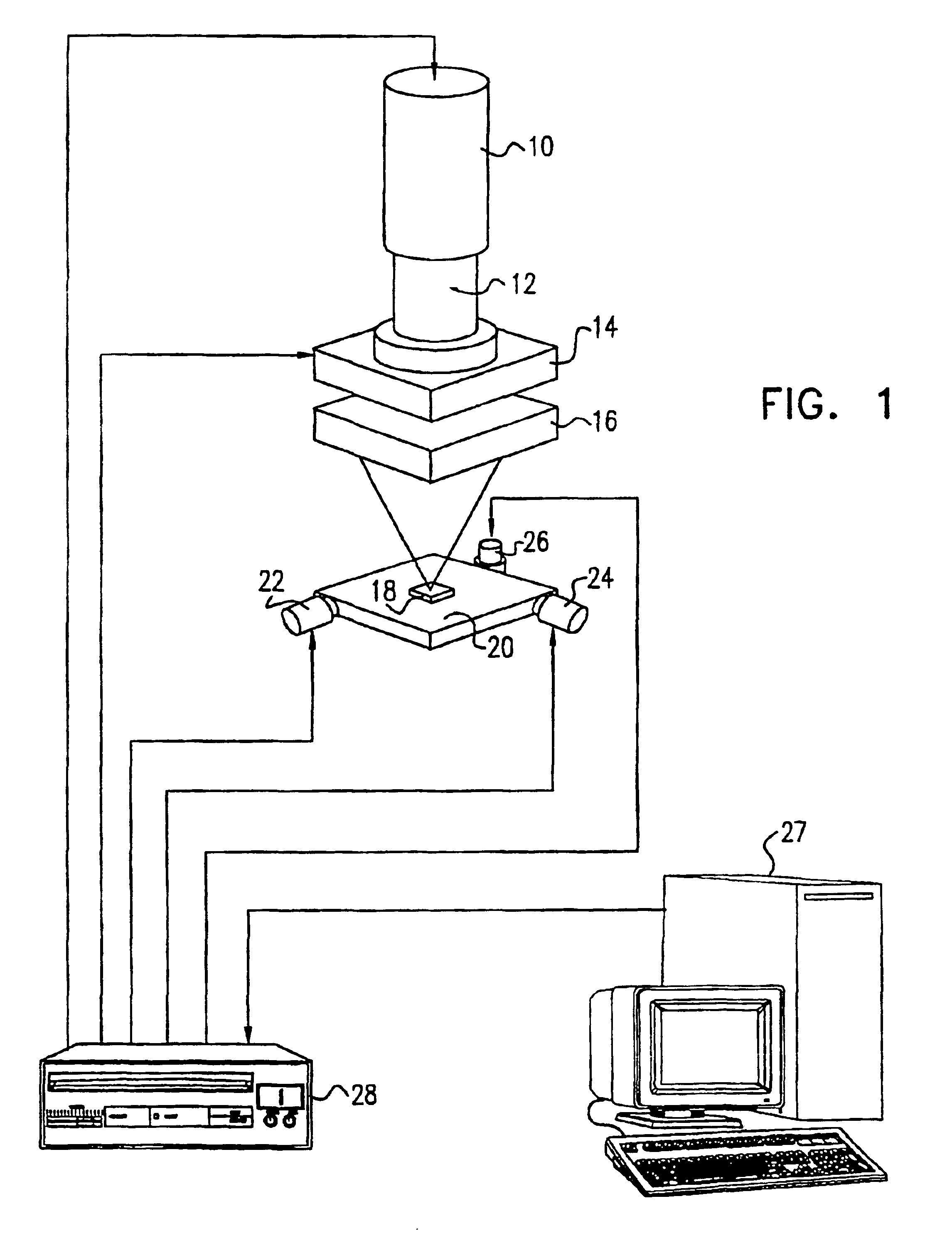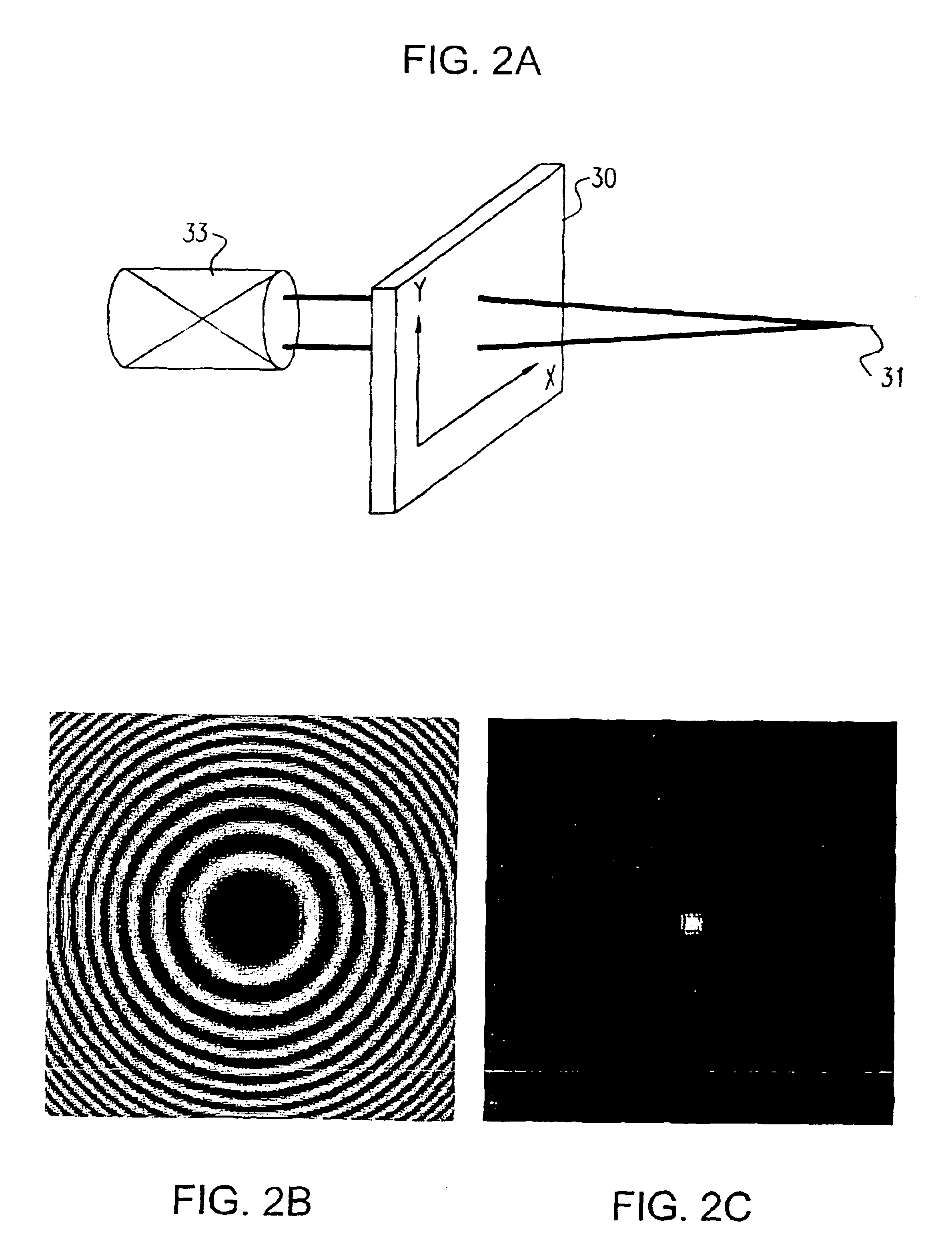Intravolume diffractive optical elements
a technology of diffractive optical elements and volume, applied in the field of intravolume diffractive optical elements, can solve the problem of not having accurate mathematical techniques for calculation of such a scattered secondary wav
- Summary
- Abstract
- Description
- Claims
- Application Information
AI Technical Summary
Benefits of technology
Problems solved by technology
Method used
Image
Examples
Embodiment Construction
[0071]Reference is now made to FIG. 1, which illustrates schematically a computer-controlled system for the production of 3-dimensional intravolume Diffractive Optical Elements, constructed and operative according to a preferred embodiment of the present invention. A femtosecond pulsed laser 10 emits a beam 12 which is deflected by beam deflector 14 and focused by means of a high quality optical system 16, into a transparent sample 18 in which the DOE is to be produced. The laser pulse peak power is sufficiently high to achieve optical breakdown for the particular material of the sample.
[0072]The sample is disposed on a CNC-controlled three-axis precision stage 20. The motions along the X-Y-Z axes are executed by means of motors 22, 24, 26. Selection of the position at which the spot is to be focused is performed either by motion of the sample using the CNC-controlled motion stage 20, or by means of a the fast optical beam scanner 14, which operates in the x-y plane only, or by a co...
PUM
| Property | Measurement | Unit |
|---|---|---|
| diffraction angle | aaaaa | aaaaa |
| transparent | aaaaa | aaaaa |
| phase properties | aaaaa | aaaaa |
Abstract
Description
Claims
Application Information
 Login to View More
Login to View More - R&D
- Intellectual Property
- Life Sciences
- Materials
- Tech Scout
- Unparalleled Data Quality
- Higher Quality Content
- 60% Fewer Hallucinations
Browse by: Latest US Patents, China's latest patents, Technical Efficacy Thesaurus, Application Domain, Technology Topic, Popular Technical Reports.
© 2025 PatSnap. All rights reserved.Legal|Privacy policy|Modern Slavery Act Transparency Statement|Sitemap|About US| Contact US: help@patsnap.com



